Archives
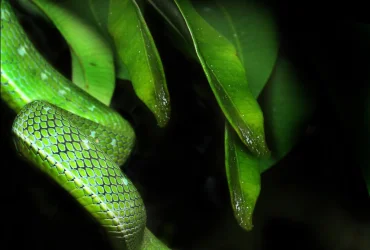 v11i2.285
v11i2.285ISSN: 1800-427X (printed)
eISSN: 1800-427X (online)
DOI:10.47605/tapro.v11i2.285
Submitted date: 14 May 2022
Accepted date: 29 October 2022
Published date: 22 November 2022
Pp. 94–96, Pl. 31.
Migration of crimson rose butterfly (Pachliopta hector) from India to Sri Lanka
P.K. Dissanayake*, P. Vinod, S. Vinod, H.S.B. Wijesinghe, R.W.D.L Kumara, H.M.D.S. Subhashana & R. Gamage
*Corresponding author. E-mail: kapila@agri.sab.ac.lk
Migrations of butterflies are common phenomena, yet they are one of the greatest natural events on earth. The migration of monarch butterflies, Danaus plexippus (L.) is a spectacular event that has received great attention in northern America. They travel 1,200–2,800 miles from the northeast United States and southeast Canada to the mountain forests of central Mexico, where they find suitable climatic conditions to hibernate from the beginning of November to mid-March. This swarming occurs primarily across North American land mass, so does not cross the sea. Although migration appears to be widespread among butterflies, its prevalence, and migration behaviours, are poorly understood.
Section Editor: Himesh D. Jayasinghe
eISSN: 1800-427X (online)
DOI:10.47605/tapro.v11i2.285
Submitted date: 14 May 2022
Accepted date: 29 October 2022
Published date: 22 November 2022
Pp. 94–96, Pl. 31.
Migration of crimson rose butterfly (Pachliopta hector) from India to Sri Lanka
P.K. Dissanayake*, P. Vinod, S. Vinod, H.S.B. Wijesinghe, R.W.D.L Kumara, H.M.D.S. Subhashana & R. Gamage
*Corresponding author. E-mail: kapila@agri.sab.ac.lk
Migrations of butterflies are common phenomena, yet they are one of the greatest natural events on earth. The migration of monarch butterflies, Danaus plexippus (L.) is a spectacular event that has received great attention in northern America. They travel 1,200–2,800 miles from the northeast United States and southeast Canada to the mountain forests of central Mexico, where they find suitable climatic conditions to hibernate from the beginning of November to mid-March. This swarming occurs primarily across North American land mass, so does not cross the sea. Although migration appears to be widespread among butterflies, its prevalence, and migration behaviours, are poorly understood.
Section Editor: Himesh D. Jayasinghe
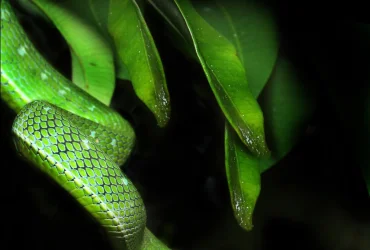 v11i2.284
v11i2.284ISSN: 1800-427X (printed)
eISSN: 1800-427X (online)
DOI:10.47605/tapro.v11i2.284
Submitted date: 30 May 2022
Accepted date: 25 October 2022
Published date: 22 November 2022
Pp. 84–93, pls. 23–30.
THE SNAKE FAUNA OF LAOS WITH NEW PROVINCIAL RECORDS
Nathanaël Maury, Patrick David* & Somchit Sudavanh
*Corresponding author. E-mail: patrick.david@mnhn.fr
Abstract
We add seventeen new provincial records for fifteen snake species of Laos with precise localities and elevations. These new records result from 45 independent surveys conducted at different times between the years 2016 and 2021 in all Laotian provinces except Attapu. In all field trips, we took a series of photographs that allowed us to prepare high-resolution photographic plates that then allowed us to identify all individuals down to species level. No specimen was killed and preserved. Here we provide the list of all new localities of snakes photographed during our surveys. We discuss potential systematic problems and the biogeographic implications of these new provincial records.
Key words : Distribution, Indochinese Region, geography, Southeast Asia, Sundaland, taxonomy
Section Editor: Thasun Amarasinghe
eISSN: 1800-427X (online)
DOI:10.47605/tapro.v11i2.284
Submitted date: 30 May 2022
Accepted date: 25 October 2022
Published date: 22 November 2022
Pp. 84–93, pls. 23–30.
THE SNAKE FAUNA OF LAOS WITH NEW PROVINCIAL RECORDS
Nathanaël Maury, Patrick David* & Somchit Sudavanh
*Corresponding author. E-mail: patrick.david@mnhn.fr
Abstract
We add seventeen new provincial records for fifteen snake species of Laos with precise localities and elevations. These new records result from 45 independent surveys conducted at different times between the years 2016 and 2021 in all Laotian provinces except Attapu. In all field trips, we took a series of photographs that allowed us to prepare high-resolution photographic plates that then allowed us to identify all individuals down to species level. No specimen was killed and preserved. Here we provide the list of all new localities of snakes photographed during our surveys. We discuss potential systematic problems and the biogeographic implications of these new provincial records.
Key words : Distribution, Indochinese Region, geography, Southeast Asia, Sundaland, taxonomy
Section Editor: Thasun Amarasinghe
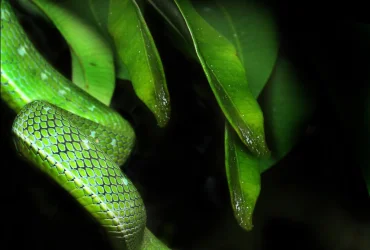 v11i2.283
v11i2.283ISSN: 1800-427X (printed)
eISSN: 1800-427X (online)
DOI:10.47605/tapro.v11i2.283
Submitted date: 22 August 2022
Accepted date: 11 November 2022
Published date: 22 November 2022
Pp. 54–83, pls. 15–22.
A REVIEW OF THE COMPLEX OF Trimeresurus hageni (LIDTH DE JEUDE, 1886) (SQUAMATA: VIPERIDAE) WITH DESCRIPTIONS OF THREE NEW INSULAR SPECIES FROM INDONESIA
Gernot Vogel*, Patrick David & Irvan Sidik
*Corresponding author. E-mail: Gernot.Vogel@t-online.de
Abstract
Variations in morphological characters were investigated among 124 specimens covering the whole range of the large, Indo-Malayan pitviper complex of species currently known as Trimeresurus hageni (Lidth de Jeude, 1886). Herein, we redefine T. hageni and discuss and confirm the validities of its description and name-bearing type; the lectotype is redescribed. Morphological analyses show that at least four taxa, distinct at species level, are currently confused under the combination T. hageni. As a consequence, three new insular species are described, from Nias Island, Siberut Island, and Simeulue Island. All these three new species differ from T. hageni sensu stricto by a combination of differences in scalation and pattern. T. hageni sensu stricto inhabits Sumatra and Bangka Island, as well as West Malaysia, Singapore and southern Thailand. The new species are compared with T. sumatranus and T. gunaleni, also present on Sumatra.
Key words : Great Sunda, Nias, Siberut, Simeulue, Sumatra, Trimeresurus sumatranus, West Malaysia
Section Editor: Thasun Amarasinghe
LSID:urn:lsid:zoobank.org
eISSN: 1800-427X (online)
DOI:10.47605/tapro.v11i2.283
Submitted date: 22 August 2022
Accepted date: 11 November 2022
Published date: 22 November 2022
Pp. 54–83, pls. 15–22.
A REVIEW OF THE COMPLEX OF Trimeresurus hageni (LIDTH DE JEUDE, 1886) (SQUAMATA: VIPERIDAE) WITH DESCRIPTIONS OF THREE NEW INSULAR SPECIES FROM INDONESIA
Gernot Vogel*, Patrick David & Irvan Sidik
*Corresponding author. E-mail: Gernot.Vogel@t-online.de
Abstract
Variations in morphological characters were investigated among 124 specimens covering the whole range of the large, Indo-Malayan pitviper complex of species currently known as Trimeresurus hageni (Lidth de Jeude, 1886). Herein, we redefine T. hageni and discuss and confirm the validities of its description and name-bearing type; the lectotype is redescribed. Morphological analyses show that at least four taxa, distinct at species level, are currently confused under the combination T. hageni. As a consequence, three new insular species are described, from Nias Island, Siberut Island, and Simeulue Island. All these three new species differ from T. hageni sensu stricto by a combination of differences in scalation and pattern. T. hageni sensu stricto inhabits Sumatra and Bangka Island, as well as West Malaysia, Singapore and southern Thailand. The new species are compared with T. sumatranus and T. gunaleni, also present on Sumatra.
Key words : Great Sunda, Nias, Siberut, Simeulue, Sumatra, Trimeresurus sumatranus, West Malaysia
Section Editor: Thasun Amarasinghe
LSID:urn:lsid:zoobank.org
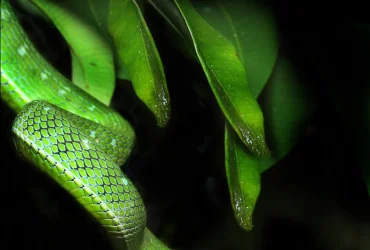 v11i2.282
v11i2.282ISSN: 1800-427X (printed)
eISSN: 1800-427X (online)
DOI:10.47605/tapro.v11i2.282
Published date: 22 November 2022
Pp. 47–53
EDITORIAL : The how and why of scientific naming: What’s in a name?
Michael S. Engel
Section Editor: Taprobanica, the journal of Asian Biodiversity
Quite a lot, actually. Names organize and give meaning to our world. They give us identity and allow us to communicate clearly and efficiently. In the context of scientific names for living and fossil organisms, they link data from around the globe into a synthetic framework from which we can make powerful predictions and effective strategies: everything from governmental policies and next-generation medicines to the origins of diversity and its responses to climate change. These, and many other reasons, are the why, but how is equally important. Unlike folk taxonomies, which are rich in cultural tradition and applicable only at local scales, scientific nomenclature must abide specific rules to remain effective globally, unbounded by the vagaries of local customs. These names must also transcend time so that data from past and future generations can be meaningfully synergized for their greatest benefit. Not surprisingly, to achieve such lofty goals, an entire form of information science is needed, one complete with its own terminology and pragmatic rules. The how of scientific naming is as vital as the why, for to fail at the first means catastrophe for the fundamental reasons of the latter. Imagine bad practices for the scientific naming of drugs or diseases and the tsunami of disastrous impacts that would follow. Now imagine the same if we failed at communicating about disease-transmitting mosquitos or poisonous mushrooms. Scientific names have life-sustaining importance and we cannot be cavalier about taxonomic science and formalized nomenclature.
eISSN: 1800-427X (online)
DOI:10.47605/tapro.v11i2.282
Published date: 22 November 2022
Pp. 47–53
EDITORIAL : The how and why of scientific naming: What’s in a name?
Michael S. Engel
Section Editor: Taprobanica, the journal of Asian Biodiversity
Quite a lot, actually. Names organize and give meaning to our world. They give us identity and allow us to communicate clearly and efficiently. In the context of scientific names for living and fossil organisms, they link data from around the globe into a synthetic framework from which we can make powerful predictions and effective strategies: everything from governmental policies and next-generation medicines to the origins of diversity and its responses to climate change. These, and many other reasons, are the why, but how is equally important. Unlike folk taxonomies, which are rich in cultural tradition and applicable only at local scales, scientific nomenclature must abide specific rules to remain effective globally, unbounded by the vagaries of local customs. These names must also transcend time so that data from past and future generations can be meaningfully synergized for their greatest benefit. Not surprisingly, to achieve such lofty goals, an entire form of information science is needed, one complete with its own terminology and pragmatic rules. The how of scientific naming is as vital as the why, for to fail at the first means catastrophe for the fundamental reasons of the latter. Imagine bad practices for the scientific naming of drugs or diseases and the tsunami of disastrous impacts that would follow. Now imagine the same if we failed at communicating about disease-transmitting mosquitos or poisonous mushrooms. Scientific names have life-sustaining importance and we cannot be cavalier about taxonomic science and formalized nomenclature.
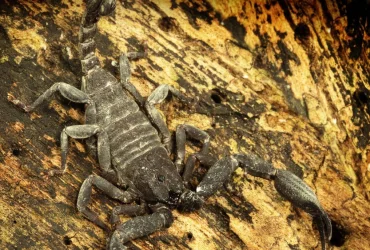 v11i1.281
v11i1.281ISSN: 1800-427X (printed)
eISSN: 1800-427X (online)
DOI:10.47605/tapro.v11i1.281
Submitted date: 23 November 2021
Accepted date: 21 March 2022
Published date: 23 May 2022
Pp. 45–46, Pl. 14.
Diet of the Indian fox (Vulpes bengalensis) in dry scrubland of north Gujarat, India
P. Desai* & N. Dharaiya
*Corresponding author. E-mail: pratikdesai825@gmail.com
Indian fox Vulpes bengalensis, a mesocarnivore of the Indian subcontinent, is distributed widely in all kinds of habitats in India except the Western Ghats. The Indian fox prefers semi-arid landscapes with low rainfall where it is easy to hunt and dig dens and where the vegetation is mainly short grasslands or scrub, thorn thickets or dry deciduous forests. They mostly avoid dense forests, steep terrain, tall grasslands, and true deserts. The Indian fox is listed as of Least Concern (LC) by the IUCN and legally protected in India under schedule II of the Indian Wildlife Protection Act 1972. An opportunistic and omnivorous feeder, its diet includes insects, scorpions, centipedes, small rodents, monitor lizards and other reptiles, ground nesting birds, their eggs and fruit such as Ziziphus sp. (Rhamnaceae), Citrullus vulgaris (Cucurbitaceae), Azadirachta indica (Meliaceae), Mangifera indica (Anacardiaceae), Syzigium cumini (Myrtaceae), Melia azedarach (Meliaceae), and Ficus bengalensis (Moraceae). Some local shepherds have also reported seeing Indian foxes feed on the freshly voided pellets of sheep. Their presence and density in any area is closely related to the abundance of food.
Section Editor: Lee Harding
eISSN: 1800-427X (online)
DOI:10.47605/tapro.v11i1.281
Submitted date: 23 November 2021
Accepted date: 21 March 2022
Published date: 23 May 2022
Pp. 45–46, Pl. 14.
Diet of the Indian fox (Vulpes bengalensis) in dry scrubland of north Gujarat, India
P. Desai* & N. Dharaiya
*Corresponding author. E-mail: pratikdesai825@gmail.com
Indian fox Vulpes bengalensis, a mesocarnivore of the Indian subcontinent, is distributed widely in all kinds of habitats in India except the Western Ghats. The Indian fox prefers semi-arid landscapes with low rainfall where it is easy to hunt and dig dens and where the vegetation is mainly short grasslands or scrub, thorn thickets or dry deciduous forests. They mostly avoid dense forests, steep terrain, tall grasslands, and true deserts. The Indian fox is listed as of Least Concern (LC) by the IUCN and legally protected in India under schedule II of the Indian Wildlife Protection Act 1972. An opportunistic and omnivorous feeder, its diet includes insects, scorpions, centipedes, small rodents, monitor lizards and other reptiles, ground nesting birds, their eggs and fruit such as Ziziphus sp. (Rhamnaceae), Citrullus vulgaris (Cucurbitaceae), Azadirachta indica (Meliaceae), Mangifera indica (Anacardiaceae), Syzigium cumini (Myrtaceae), Melia azedarach (Meliaceae), and Ficus bengalensis (Moraceae). Some local shepherds have also reported seeing Indian foxes feed on the freshly voided pellets of sheep. Their presence and density in any area is closely related to the abundance of food.
Section Editor: Lee Harding
Hubungi Kami
The ultimate aim of the journal is to provide an effective medium for communication of the latest and best scientific information.
Copyright © 2020 Taprobanica. All Rights Reserved
Jasa Pembuatan Website by IKT




